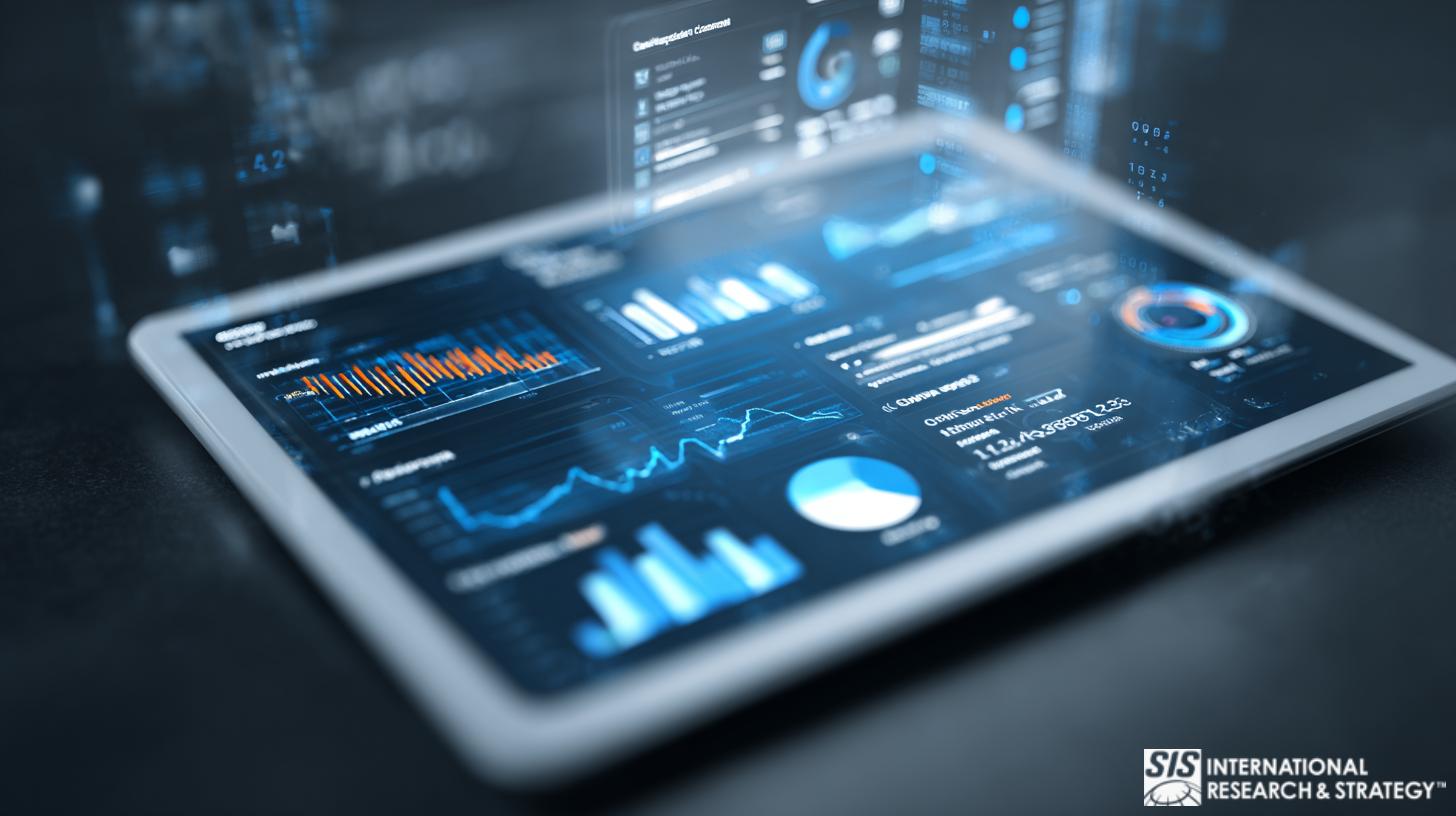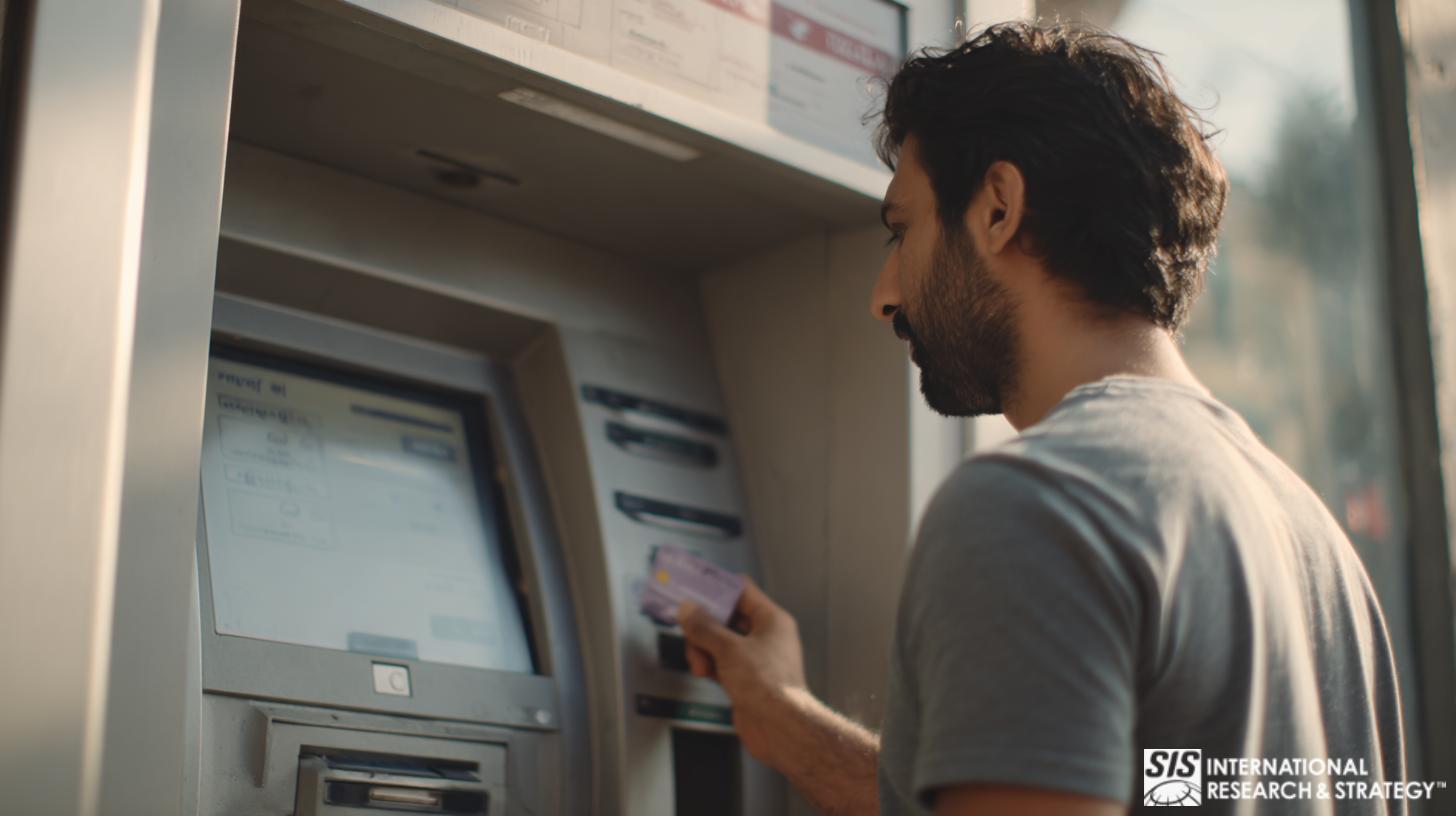Marktonderzoek naar bankgegevensanalyse

Data Analytics plays a significant role in Banking
Gaining the top position in the banking sector is not easy in today’s competitive world. Executives need a better understanding of banking details and current status, which plays a significant role in lifting the bank’s position to the top. Banks can use a data analytics program to order and examine customer details. Such a program shows deposits and other transactions. It’s an excellent tool for customer retention and compliance.
Understanding Bank Data Analytics Market Research
Bank data analytics market research analyzes customer behavior analysis, risk assessment, fraud detection, and operational optimization, among other elements. By leveraging advanced analytics tools and techniques, financial institutions gain invaluable insights into their operations, enabling them to make data-driven decisions that drive profitability and enhance customer satisfaction.
Why Businesses Need Bank Data Analytics Market Research

Bank data analytics market research provides invaluable insights into customer trends, allowing banks to tailor their products and services effectively to meet evolving demands. It also enables banks to assess and mitigate various risks, including credit risks, market risks, and fraud risks.
Moreover, operational efficiency is essential for banks to optimize resources and streamline processes. Bank data analytics market research helps banks identify inefficiencies, simplify workflows, and allocate resources effectively.
Additionally, this research helps banks ensure compliance with regulatory standards by providing insights into regulatory requirements and monitoring compliance activities… But, it offers many other benefits, including:
• Improved Customer Experience: Bank data analytics market research allows banks to better understand their customers’ needs, preferences, and behaviors. This insight enables them to tailor their products and services to meet customer expectations, deliver personalized experiences, and build stronger customer relationships.
• Fraud Detection and Prevention: With the increasing prevalence of fraud in the banking sector, detecting and preventing fraudulent activities is a top priority for banks. Bank data analytics market research equips banks with the tools and capabilities to detect suspicious patterns and anomalies in transaction data, enabling them to identify and prevent fraud in real-time.
• Operationele efficiëntie: This research enables banks to analyze their operational processes, identify areas for improvement, and streamline workflows, leading to enhanced productivity and efficiency across the organization.
How Does Bank Data Analytics Market Research Differ from Traditional Market Research?
Bank data analytics market research deals with large volumes of complex financial data, including transactional data, customer information, market data, and regulatory data. Traditional market research, on the other hand, typically involves collecting and analyzing data from surveys, focus groups, and secondary sources, which may not be as voluminous or complex as financial data.
Additionally, bank data analytics market research often employs predictive analytics techniques to forecast future trends, identify risks, and make strategic decisions. Traditional market research may focus more on descriptive analytics to understand past trends and current market conditions.
Furthermore, bank data analytics market research requires a thorough understanding of regulatory requirements and compliance standards, given the sensitive nature of financial data. Traditional market research may not have the same level of regulatory scrutiny, although ethical considerations and data privacy concerns are still relevant.
Expect Results from Bank Data Analytics Market Research

Businesses can expect several key results from conducting bank data analytics market research. These results include:
• Comprehensive Data Analysis: Bank data analytics market research involves comprehensive analysis of financial data, including transactional data, customer information, market data, and regulatory data. Businesses can expect in-depth insights into their operations, customer behavior, market trends, and regulatory compliance requirements.
• Oplossingen op maat: Bank data analytics market research provides customized solutions tailored to the specific needs and objectives of banking sector businesses.
• Regulatory Compliance: Market research ensures regulatory compliance by adhering to industry standards and best practices for handling sensitive financial data. Businesses can expect robust data security measures, ethical data handling practices, and compliance with regulatory requirements to protect customer privacy and confidentiality.
• Strategic Recommendations: It delivers strategic recommendations based on data-driven insights, enabling businesses to make informed decisions that drive growth and profitability.
Current Trends in Bank Data Analytics Market Research
Several current trends are shaping the landscape of bank data analytics market research. Some of these trends include:
• Machine Learning and AI: Machine learning and artificial intelligence (AI) are increasingly adopted in bank data analytics market research to enhance predictive modeling, risk assessment, and customer segmentation. Banks leverage machine learning algorithms to analyze customer behavior, detect anomalies, and personalize banking experiences, improving customer satisfaction and retention.
• Fraud Detection and Prevention: With the rise of sophisticated cyber threats and financial fraud, banks prioritize fraud detection and prevention in their data analytics initiatives. Advanced analytics techniques, such as anomaly detection and pattern recognition, are being employed to identify fraudulent activities in real-time, helping banks mitigate risks and protect their assets and customers.
• Customer Experience Optimization: Enhancing customer experience has become a focal point for banks, driving the adoption of data analytics to understand customer preferences, predict their needs, and deliver personalized banking experiences. Banks are leveraging data analytics to optimize digital channels, personalize product offerings, and improve customer engagement, ultimately leading to higher customer satisfaction and loyalty.
Opportunities in Bank Data Analytics Market Research for Businesses
Businesses in the banking sector can capitalize on several opportunities offered by bank data analytics market research. These opportunities include:
- Verbeterde klantinzichten: Bank data analytics market research provides businesses with enhanced insights into customer behavior, preferences, and needs.
- Risk Management Optimization: Bank data analytics market research enables businesses to optimize risk management strategies by identifying and mitigating potential risks in real-time.
- Productinnovatie: Bank data analytics market research enables businesses to innovate and develop new products and services that address emerging customer needs and market trends.
Challenges of Bank Data Analytics Market Research for Businesses

Businesses in the banking sector face several challenges in leveraging data analytics effectively. These challenges include:
- Talent and Skills Gap: Another challenge is the shortage of skilled data analytics professionals with expertise in banking and finance. Banks require diverse skills, including data science, statistical analysis, and domain knowledge in banking operations.
- Regulatory Compliance Complexity: Banks operate in a highly regulated environment with stringent compliance requirements. Implementing data analytics solutions while ensuring compliance with GDPR, CCPA, and Basel III regulations poses significant challenges.
- Ethical and Bias Issues: Ethical considerations and bias in data analytics present challenges for banks. Analyzing large volumes of data may inadvertently lead to biased outcomes or unethical practices, raising concerns about fairness, transparency, and accountability.
Key Elements to Consider in Bank Data Analytics Market Research
Klanttevredenheid
Customer Satisfaction is crucial to achieving excellent business results. It helps retain existing customers and attract new ones. Banks generally inform customers about the details of the latest offers and other exciting deals through emails and messages.
Any time support is one of the best advantages of today’s banking sector. The majority of the leading banking sectors now have 24/7 customer support. It can increase the number of customers and investors in the banking field.
The monitoring of phone numbers and tracking codes is critical. It helps bankers get details about transactions and other banking details. The use of a data analytics program in the banking sector can reduce labor costs. It assures instant access to customer details and reduces the risk of time and money loss. Delays in banking transactions can cause the bank to lose customers. Banks can prevent customer loss by using data analytics.
Machine Learning
Machine learning in banking is essential. It helps bankers achieve the best results in today’s marketing world. At present, many online services are available worldwide. These services provide training in machine learning. How do we use data science in banking? By using the right software programs. Artificial Intelligence (AI) is one of the best tools for promoting banking sectors.
Klantenbehoud
Customer retention is crucial for uplifting the bank’s value. Data analytics can help banks manage customer acquisition costs, and even better, it does so effectively. Customer segmentation is critical. It provides details of new offers and other exciting sales. Artificial intelligence helps bank marketers pick the targeted group or audience, dramatically extending customer lifetime value.
Artificial Intelligence
Finding new sources of growth is crucial to boosting profits. Your bank will need AI tools for this search, and it can also benefit from our expertise at SIS International.
Data Modeling
The shift from traditional to digital bank services calls for new techniques. For example, at SIS International, we use data modeling. This technique documents software and business system design. Financial institutions can move faster and smarter with real-time data, since it improves customer experience, boosts financial performance, and manages risk. It’s also helpful in developing an HR Talent Strategy with Data Scientists.
About Bank Data Analytics Market Research
Having data is not enough. Banks need data quality controls. These controls ensure that the information they have is accessible and trustworthy, allowing them to remain competitive and compliant. They also need to know that they’re getting decent Returns on Assets (ROA) and Returns on Equity (ROE).
SIS International provides the following solutions:
- Data Visualisatie
- Statistical Consulting
- Regression analysis
- Conjoint analysis
- Voorspellende analyse
- ANOVA
- Montecarlo Analysis
- Data Modeling
- General Statistics package
- Box-Analysis
- Confidence Intervals
- Outliers Analysis
- Distribution, Skewness & Kurtosis analysis
- Alpha, F-stat, p-value, etc.
- ROA & ROE Analysis
- De-seasonalized analysis
Onze vestigingslocatie in New York
11 E 22nd Street, 2e verdieping, New York, NY 10010 T: +1(212) 505-6805
Over SIS Internationaal
SIS Internationaal biedt kwantitatief, kwalitatief en strategisch onderzoek. Wij bieden data, tools, strategieën, rapporten en inzichten voor besluitvorming. Wij voeren ook interviews, enquêtes, focusgroepen en andere marktonderzoeksmethoden en -benaderingen uit. Neem contact met ons op voor uw volgende marktonderzoeksproject.

